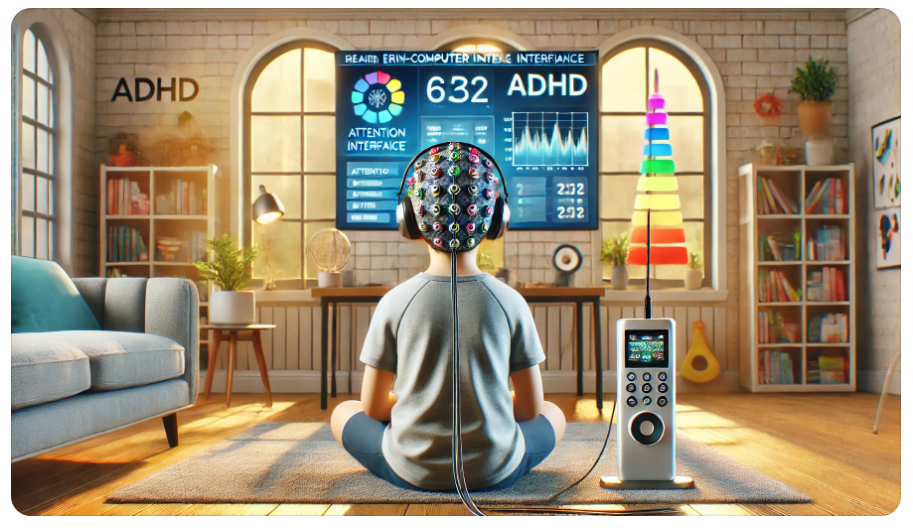Innovative Wearable Device Streamlines ADHD Diagnosis
A cutting-edge, wearable brain-computer interface (BCI) is offering a more efficient and accurate approach to diagnosing attention-deficit/hyperactivity disorder (ADHD). This non-invasive device measures neural activity while the user engages in a video game-based test, providing clinicians with valuable insights. Although still in the research phase, this technology shows promise in reducing the uncertainty often associated with ADHD diagnosis.

Current Challenges in ADHD Diagnosis
Currently, diagnosing ADHD relies heavily on psychiatric and behavioral evaluations due to the lack of established genetic biomarkers. As outlined by the Mayo Clinic, there are three recognized ADHD types based on symptoms: predominantly hyperactive/impulsive, predominantly inattentive, and a combined type that falls somewhere between the two.
The existing diagnostic process can struggle with identifying those who have the combined type of ADHD. Unlike the more outwardly visible symptoms of hyperactivity, individuals with combined or inattentive types may present with internalized symptoms. Many of these individuals, especially high-achieving or academically gifted ones, have learned to mask their struggles, making diagnosis difficult. This issue is particularly prevalent among girls, who are often misdiagnosed with generalized anxiety disorder (GAD) when ADHD is the root cause.
A Game-Changing BCI from Taiwan
Researchers from Taiwan’s National Yang Ming Chiao Tung University (NYCU) are developing a solution to simplify ADHD diagnosis. They have created a wireless BCI device that fits comfortably on a patient’s head, capable of recording both resting-state and task-state electroencephalography (EEG) signals.
While EEG is already used in ADHD diagnosis, it typically does not differentiate between resting and active brain states or capture the nuances of ADHD subtypes. This new BCI device addresses these gaps, offering a more detailed understanding of a patient’s brain activity.
How the BCI Device Works
The BCI device is quick and user-friendly, requiring just 10 minutes to set up. “For children, traditional ADHD diagnosis needs many interviews with teachers and parents, and questionnaires to decide whether the child has ADHD or not,” explained researcher Jo-Wei Lin during the Innotech Expo in Taiwan on October 18.
The device pairs with a video game designed to elicit visual and auditory responses from the patient. As the game is played, data from the brain is transmitted through multiple dry EEG electrodes to AI-assisted software. This system processes the brain activity data and provides real-time indicators of attention, stress, and fatigue.
“We use this to detect the EEG and transport the data to the platform that the doctor can see, [showing] attention, stress, and fatigue indicators in real time,” said Lin. “We then send the EEG signals to the AI-assisted system, to decide whether [the patient] has ADHD or not.”
Supporting Clinicians, Not Replacing Them
While the BCI device is not intended to replace clinical evaluations, it serves as a valuable tool for providing objective insights. The initial research has focused on children, but the technology is adaptable for adults as well, making it a versatile solution in ADHD assessment.
“We would send this report to the doctors to help them – to give them more objective indicators to help them decide on the ADHD,” Lin added.
High Accuracy Rates and Improved Patient Experience
The game-based test offers a user-friendly alternative to traditional interviews and questionnaires, making the assessment process more engaging, especially for children. The research team, in collaboration with Hsinchu Ton Yen General Hospital and Kaohsiung Chang Gung Memorial Hospital, reports an accuracy rate of about 95%.
“We let the children wear the testing device to play the ‘game-based attention test’ by the research team,” said Li-Wei Ko, professor at NYCU’s Institute of Electrical and Control Engineering, in September. “At the same time, we analyze their brainwave changes to determine whether they tend to hyperactivity, which can shorten the traditional diagnostic process from three months to one month.”
Potential for Broader Applications in Neuroscience
The team’s device not only has the potential to revolutionize ADHD diagnosis but could also be applied more broadly in other areas of neuroscience diagnostics and treatment. As research progresses, this technology could pave the way for more accurate, efficient, and patient-friendly approaches to understanding and managing ADHD.